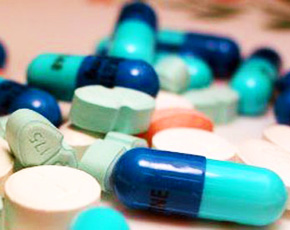Medicine today is to health care as fuel is to a car. The health care system has come to run on medicines. Patients flock to where they knew they would get lots of medicines. But, if their visit to the doctor happens at a time when the center is running short of supplies and patients do not bring medicines home they are unlikely to go back there again till the time medicines supplies had been replenished. More than half of the time the required medicines are not there when you need them in the health facilities. Most importantly, the missing ones are those that save lives while the ones there are those known to be outright irrational and toxic for human health.
It is quite clear that this over emphasis on medicines is causing economic losses and there are inevitable health hazards due to over use. Is there a way out of this double jeopardy? Yes there is. But we need to extend this discussion from strictly biomedical into the realm of human rights and essential services.
_________________________________________

Patients typically yo-yo between no-drugs-at-all to too-many-drugs. In my professional life I have seen patients dying from lack of something as simple and inexpensive as a tablet of paracetamol to over use of fourth generation sophisticated and expensive antibiotics.
Some would argue that such patient behaviors are indeed borne out of the physicians’ over-reliance on prescribing medicines to all and sundry health problems through the history of modern medicine.
An attempt to find out who might be responsible for this would end up in a hen first or egg first debate, but the fact remains that there is unnecessary and over use of medicines in the way we treat our health problems.
And while on the one hand, this over emphasis on medicine use has created a serious public health problem around the world, there is the inevitable wastage of scare resource resulting in ever reducing access to medicines and indeed to health care on the other.
In developing countries, access to medicines is further undermined by poor medicine supply and distribution systems, low investment in health and the ever increasing cost of medicines.
My topic today is focused on the lack of medicines rather than the excess of it – though excess is no lesser a problem. I hope to come back to it another time ...
Buying medicines accounts for the largest chunk of health spending whether at the public or private level. In Pakistan, public sector spends 60 per cent of its recurrent health budgets on buying medicines and supplies, while medicines constitute the largest health related expense for the poor household which has been reported to be as high as 90 per cent of the health expense.
There have been three fundamental changes brought around the world in the health and pharmaceutical sector policy and practice communities, as well as the larger consumer communities to respond to this situation.
The first one is the concept of “Essential Medicines”. These are the medicines that satisfy the priority health care needs of the population. Essential medicines are selected with due regard to disease prevalence, evidence on efficacy and safety, and comparative cost-effectiveness. A carefully drawn “Essential Medicines List” helps countries rationalise the purchasing and distribution of medicines, thereby reducing costs to the health system.
This concept has made it mandatory on health systems everywhere to ensure around the year access to the essential medicines to patients that they need; that the medicines and medical devices are safe, effective and of assured quality; and that medicines are prescribed and used rationally and that medical devices are used and managed effectively.
The second important change that has come about in recent years is that essential medicines are set as part of the right to the highest attainable standard of health ("the right to health") which is also well-founded in international law. Access to essential medicines has been accorded the recognition and the prestige of an international law and a human right.
The right to health first emerged as a social right in the World Health Organisation (WHO) Constitution (1946) and in the Universal Declaration of Human Rights (1948). The binding International Covenant on Economic, Social, and Cultural Rights (ICESCR) of 1966 details the progressive realisation of the right to health through four concrete steps, including access to health facilities, goods and services.
The authoritative General Comment 14 (2000) further applies the principles of accessibility, availability, appropriateness and assured quality to goods and services, which include essential medicines "as defined by the WHO Action Programme on Essential Drugs.
Thirdly, there has been a lot of realisation that independent information must be assured for appropriate use of essential medicines. WHO now has strict advice to countries to implement national programmes to promote rational use of medicines through policies, structures, information and education.
Rational use of medication saves lives, makes sense and saves money. It limits undesired toxicity and adverse events and maximizes on the bene?ts that can be derived from optimal use of medications.
Patients are encouraged to always obtain advice from a healthcare provider to interpret symptoms of an illness and the appropriate remedy. One should avoid self-interpretation of symptoms, self-prescription of medication, and self-acquired remedies. It is equally important for one to view with caution advertisements that promote medications.
In conclusion, low access to medicines needs to be dealt with by making access to medicines a basic right and promote their rational use through independent sources of information.

The views expressed by this blogger and in the following reader comments do not necessarily reflect the views and policies of the Dawn Media Group.









































